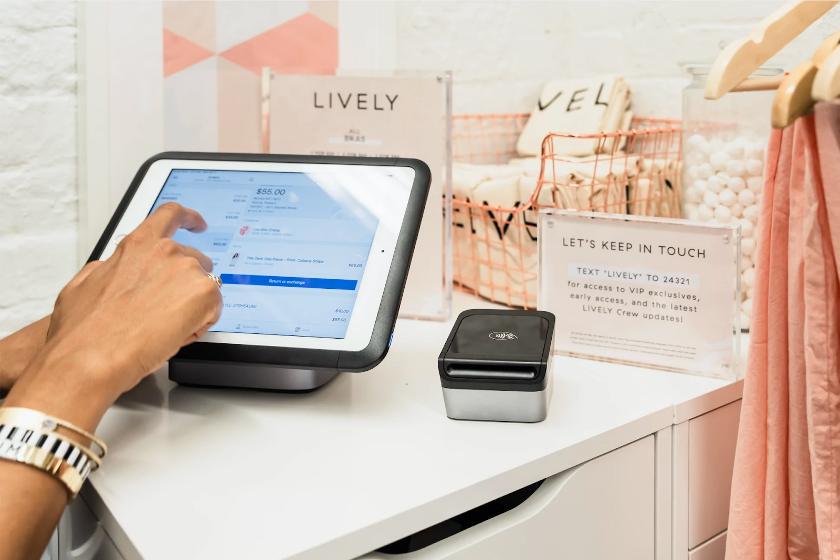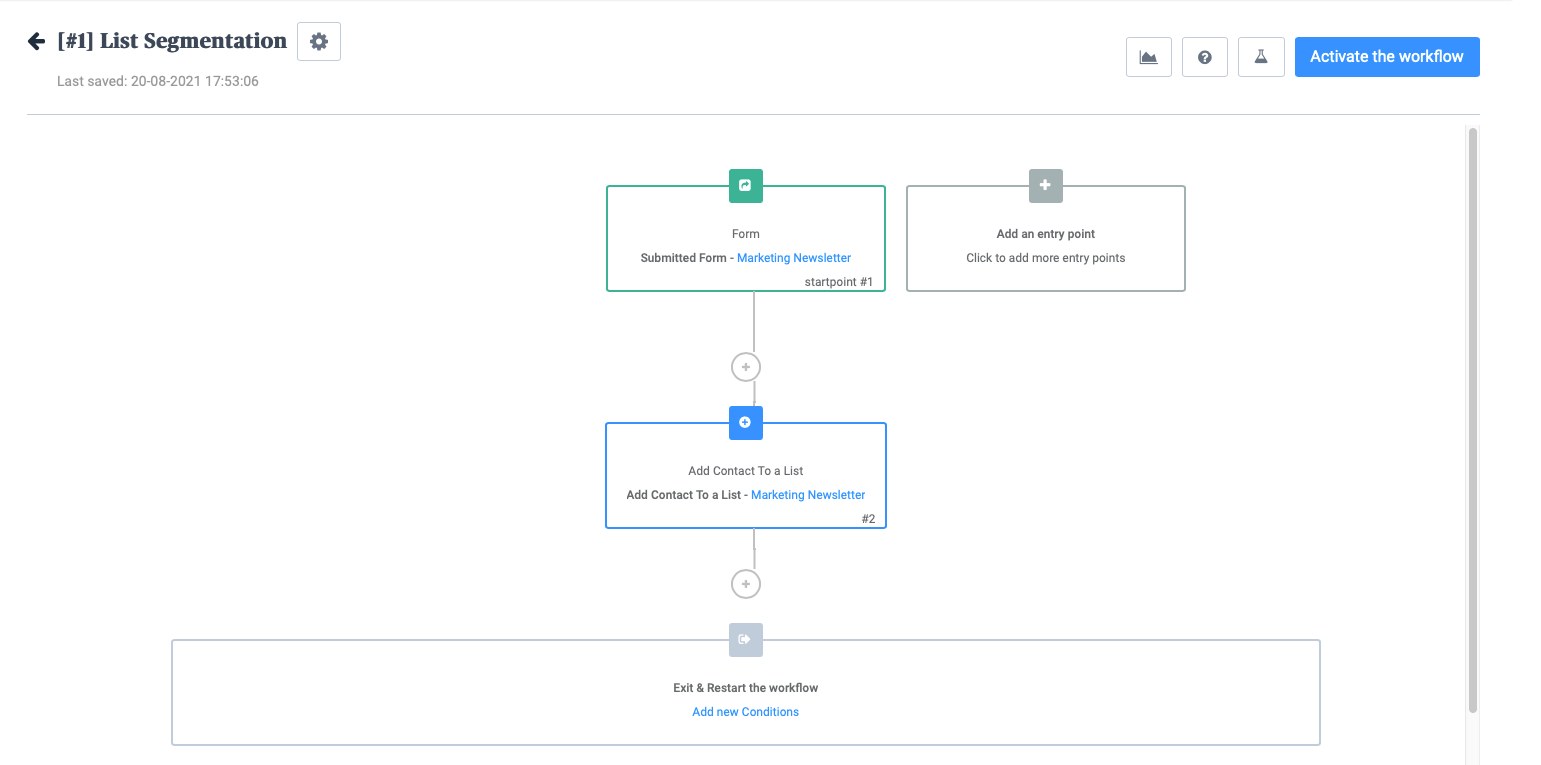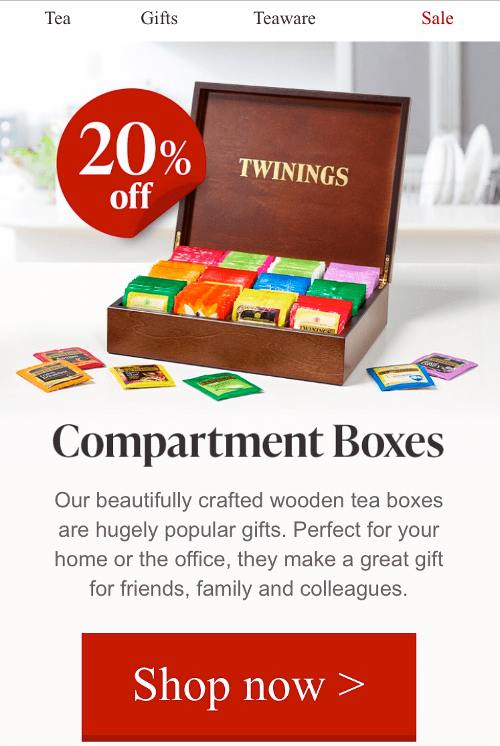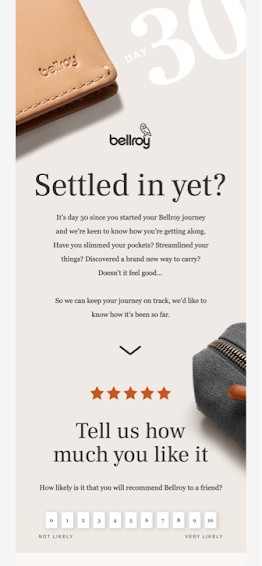Although email marketing for retailers has been practiced for decades, it is still one of the most effective retail marketing methods for building and nurturing customer relationships. In fact, 87% of marketers say email is critical to success and 41% consider it the most effective channel.
This guide discusses how to use email marketing to promote your retail business, whether you’re just starting out or are looking to grow.
Key points to make your email marketing strategy a success:
- Build and segment your list to make automation and personalization easier
- Ensure your email design and copy are legible, easy to read, and consistent with your brand
- Personalize the approach for your audience and your business
- Test and analyze to understand what’s working and what’s not
How to Get Started With Email Marketing for Retail
You can get started with retail email marketing by following these four steps:
Step 1: Choose the Right Email Marketing Software
Choosing the right email software is important because different services have their specialties and unique selling points.
Many customer relationship management (CRM) software have built-in email marketing tools if you prefer an all-in-one solution. However, you might want to use more dedicated software with specific email tools and features to help you grow and manage your subscriber list.
Choosing the right email marketing software boils down to answering two main questions:
- Does my business need a whole CRM suite, or could we just use an email service provider (ESP)?
- Would using a platform with subscriber-based pricing be more cost-effective?
Step 2: Build Your List
It’s never too soon to start building your retail industry email list, even if you don’t know your email content plan yet. According to data from Litmus, most email signups happen on your website homepage, social media pages, or other pages on your website.
Here are some ways you can build your retail email list:
- Use email capture or a signup form on your website. Place signup forms on pop-up windows, static pages, and blog posts.
Mattress brand Casper’s email signup form is in the footer of its website and makes it easy for the customer to sign up by requiring them to fill in just their email address. It also has an exit pop-up signup form that uses a limited-time offer for a headline. Even if you’re not interested in buying a mattress, you can still shop the sale as long as you join Casper’s email list.

Email signup form in Casper’s website footer and displayed on every page
- Use a POS system that captures emails. Even if you’re a brick-and-mortar store, the demand for digital receipts is on the rise—89% of survey respondents said they would like the option. POS systems like Square offer the digital receipt feature.
- Ask for emails at checkout. If nothing else, you can also simply ask customers if they’d like to join your email list at the point of purchase, both in-store and through online opt-in checkboxes.
For example, New York-based bra and undies retailer LIVELY uses the Shopify POS to capture customers’ email addresses. Owner Michelle Cordeiro Grant shares that the brand gets customers’ contact information when they come in for a fitting. Then, she puts them in the same nurturing email sequence and sales funnel from its online store.

Capture your customers’ email addresses at checkout using your POS system. (Source: Shopify)
Step 3: Segment Your Email List Subscribers
Segmentation is when you group your list based on shared attributes.
There are two main ways of going about email list segmentation:
- Create customer profiles and set customer personas, and then manually organize your lists based on those groupings. This allows you to have more hands-on control over who you send certain emails to and when.
- Using behavior-based automatic segmentation. Automated segmentation, like that offered by Sendinblue, can create lists based on which landing page or CTA new subscribers used, which product category they purchased, etc.
Here’s a basic example of an automated segmentation flow:

Example of an automated segment flow from Sendinblue
In the above example, when people sign up through a specific form, they’re added to a list—this enables the marketer to send relevant messages to various groups of subscribers.
Step 4: Integrate Other Platforms & Marketing Channels
As important as email is, you should still consider it just one small piece of the marketing puzzle. Yet less than a quarter of email marketing programs are “highly integrated” with other marketing channels.
Customers don’t compartmentalize interactions with your brand based on channel—so neither should you. According to research from Catalyst Digital, 66% of online purchasers’ pre-purchase touchpoints were online (spread across different channels), and 31% were offline.
Here are a few ways you can get it all to work together:
- Connect your POS. Earlier, we mentioned using a POS system that captures emails—you can also use this method to register customers in loyalty programs.
- Sync with other advertising initiatives. Instead of promoting your products and services, your business could champion a nonprofit cause (or other types of partnerships) where you can cross-promote and capture new subscribers.
- Use your email list to build lookalike audiences on social media. When you run ads on platforms like Facebook, Twitter, Instagram, and LinkedIn, you can refine your target audience using your email list to get the best chance of finding new customers.
Retail Email Marketing Tips & Best Practices
Design With a Mobile-first Mindset
According to GetResponse’s 2022 Email Marketing Benchmarks Report, people open emails on all types of devices (mobile, tablets, and desktops) with a strong trend toward mobile in terms of clicks (45.97%). Given that, you may consider a mobile-first mindset when creating your email marketing for retail plans.
Designing with a mobile-first approach means structuring your email campaigns for mobile devices rather than desktop. Mobile-friendly design tends to translate well to other devices.
To master mobile-first email design, stick to the following best practices:
- Keep your subject line to 30 characters or less (desktops show up to 60 characters). Here are a few examples of how long 30 characters look like:
- Want to sign up for my list?
- You can get 20% off ‘til tonight!
- Did you forget something?
- Take advantage of using the email preheader (text that shows after the subject line in email inboxes). If the subject line piques your subscriber’s interest, then they’re probably going to read your preheader before they open.
- Make the email design feel like an app—have clear branding, scannable copy, easy-to-click buttons, and above-the-fold image placements.
- Use small file sizes for images and files.
Take a look at Twining’s email below. You can clearly see how it applies all the best practices enumerated above. Note how much information it delivers with such a small space on mobile without making the entire email look cluttered. Plus, it has a clear and big CTA button.

Example of a mobile-first email from
Twinings with a clear CTA button
Personalize Your Messages
Segmenting your lists is part of a bigger element in your marketing strategy: personalization—and this happens to be the biggest priority for 55% of email marketers over the next 12 months.
Personalization comes in many forms with varying levels of effort. Many businesses simply change the “Hey there!” or “Dear Customer” with the customer’s name—but effective personalization goes far beyond that.
You can also include purchase behavior personalization, such as recommended products, in the email design. Take Crate & Barrel, for example:

Example of a personalized email from Crate & Barrel (Source: Really Good Emails)
Leverage Marketing Automation
Manual email management is cumbersome—and near impossible if you have growth goals. That’s where marketing automation comes in. As many as 48% of marketers say they plan to automate more aspects of their email marketing for retail stores over the next year.
Automating various email processes can help you save both time and money, as well as increase email effectiveness—single message autoresponder emails have seen 90% open rates and 27% click-through rates.
There are a few types of emails you can automate, including:
- A post-purchase email sequence to help upsell or cross-sell other products or gather feedback. More than half of marketers automate some sort of post-purchase email. See this email from Bellroy, for example:

Example of a post-purchase email from Bellroy (Source: Really Good Emails)
- Transactional emails, such as order confirmation and shipping information, to help recover abandoned carts or re-invite inactive users. Most, if not all, ecommerce platforms provide automated transactional emails. These abandoned cart email examples can help get your ideas rolling.
- Welcome emails to encourage product or brand engagement. These, on average, get nearly a 70% open rate and around 24% click-through rate.
Optimize Your Subject Lines
A key area to focus on is the subject line. Optimizing your subject line is important because it can make or break your open rates—and with nearly 376.4 billion emails estimated to be sent and received in a single year, it’s more important than ever to stand out.
There’s plenty of speculation about how many characters should be in your subject line, whether or not to use emojis, capitalize words, etc. However, research by GetResponse shows those things don’t matter. What truly matters is knowing your customers and what’s more likely to compel them into opening your email.
Take these subject lines, for example:

Examples of different styles of subject lines
The above subject lines are a mix of behavior-based personalization and general discount announcements and use the language of their (younger demographic) subscribers.
Add Value to Your Content
As you work on gaining new subscribers, don’t forget about the people already on your list. To keep them from unsubscribing, you’ll need to make sure you’re adding valuable content to their lives and not just sending out endless promotions.
Of course, value is subjective—some audiences would like some entertainment or humor as a value-add, while others prefer educational content. Check out this example from Judy:

Example of a value-add email from Judy (Source: Really Good Emails)
The key to making sure your content is adding value is knowing your audience by going out of your way to find out what they want (not just assuming you already know). If you’re stuck, you can use a poll on social media or ask for feedback at the end of your emails. You can even send an email survey to your list.
Track Engagement
It’s important to always be open to making adjustments to your emails by reviewing your analytics and testing. Analyzing your email performance is essential—otherwise, you end up stumbling through your strategy blind and not making data-informed decisions. However, 36% of marketers aren’t measuring email ROI at all, and 44% want to refine their email testing, measurement, and performance practices.
Every email marketing platform will have analytics for each email or an overall performance dashboard:
Example of a standard email dashboard showing how an individual email send performed.
From there, you can use metrics such as open rate, clicks, and opt-outs (unsubscribers) to help you understand what type of emails your customers engage with the most and iterate new variations.
Test Messages Before Sending
It’s important to include quality assurance (QA) as part of your retail email marketing workflow. As many as 39% of marketers say testing is their biggest roadblock in email. An established QA process can help you flag any major issues before sending out a real campaign to your list.
The QA process should include checking links, images, and copy, as well as making sure everything renders properly across all devices.
Make It Easy to Unsubscribe
It’s important to make sure it’s easy for recipients to unsubscribe from your list. It’s actually a legal regulation under the CAN-SPAM Act to include the option for people to unsubscribe from your list in every email you send.
Stay True to Your Brand
It’s important to be consistent with your branding across every touchpoint, email included. Design your emails to be in line with your visual brand identity, leveraging the same colors, fonts, and design styles.
Keep your voice consistent as well. You can be a bit more casual and conversational in tone for engaging emails, and more professional and straightforward for emails about return policies and other more serious matters—but the voice must always be consistent.
Make Your Message Easy to Read
Emails should be easy to read, and this means intentional design and copywriting. Keep the language clear and simple. Short sentences work well, as well as common words that are easy to understand.
Beyond that, ensure the font is large and clear enough to read, and that there’s enough contrast between the background and your text. If you have text over an image, consider including a text box with some transparency, since the words will render differently depending on the device.
Retail Email Marketing Frequently Asked Questions (FAQs)
For starters, you “own” your audience. Marketing channels like search ads and social media own the audiences on those platforms—so they can limit the data shared with you, as well as your access and visibility to those users. Email marketing is also more intimate than other interactions. Rather than broadcasting a message to the public, email recipients invite you into their inboxes. These interactions are more private and allow businesses to create strong connections with customers.
Email marketing could be useful to an online retailer because it allows them to build relationships with customers, send important messages about purchases, and promote the brand and products.
Use email in retail communications to send pre- and post-purchase messages to your audience. You can also use the data from email activity to learn about your audience and inform other business and marketing initiatives.
The most effective kinds of email messages are:
- Personalized messages with tailored product recommendations and resources
- Messages that reiterate the benefits of a product
- Customer winback emails for people who haven’t made a purchase in a while
- Cart abandonment emails for users who haven’t completed a purchase
You can market your product by following a mix of these strategies:
- Running promotions
- Offering free shipping
- Sharing a discount code
- Showing off user-generated content
- Highlighting positive customer reviews
- Including product photos and video
Bottom Line
Retail email marketing is still one of the most effective and affordable methods of engaging customers and boosting revenue. However, don’t forget it’s only one of several marketing channels you should adopt for a holistic, omnichannel presence.
The tips we’ve covered in this guide, from choosing the right email marketing platform to reviewing your performance, should help you not only get started on your email marketing strategy but also thrive.
